Хаас за Франция
Ромен Грожан:
We’re now a third of the way through the 2019 season. Can you provide an assessment of where Rich Energy Haas F1 Team stands in relation to your goals and where it stands in relation to its counterparts?
I think it’s been an interesting year – not the one we were hoping for at the beginning. We’ve got a very good car. We’ve had some very good races, but we’ve also had some bad luck and a car that’s been very complicated to use sometimes. So, our performance has been a bit up and down, which is not what we were looking for after last year where we were very consistent. We’re working really hard trying to understand that and to get the best from the VF-19.
The team’s last series of upgrades to its Haas VF-19s came in early May at the Spanish Grand Prix. How have they performed, or after competing at back-to-back city circuits in Monaco and Montreal, will France be a truer test of how the upgrades are performing?
The upgrades have worked well from Barcelona onward, and I think they work well everywhere. France will definitely be a circuit where the aerodynamics are more important – more so than Monaco and Montreal – so yes, it will be a good test. Again though, our main focus is getting the whole package working, meaning tires and so on.
You’re coming up on a slate of five races in seven weeks, beginning with back-to-back grands prix in France and Austria. Is this the make-or-break part of the season for teams?
Yes, it’s an important part of the season with a lot of races in a row. It’s five times 25 points to take, which is quite big, so I guess it’s an important part of the season.
Beyond the continued understanding of this year’s Pirelli tire lineup, is there a specific area of improvement you’re targeting in these next few races?
We just have to keep learning, keep improving and keep getting the relationship with my engineers better and better. It’s only seven races we’ve done together as a new group. Obviously, when the tires are working things are smooth and easy, but when they’re not, things are very complicated.
The French Grand Prix is your home grand prix, and last year was the first time you actually had a home grand prix. What was that like and how will that experience help shape your routine for this year’s race?
Last year was a very good experience. I really enjoyed my time at Le Castellet and the support from the fans. I’m looking forward to this year again. I’m hoping for a better result, as last year was not the race I wanted. So, let’s hope it’s a good weekend, a good race, make sure we don’t spend too much energy outside the track, but on the other hand, I want to share a lot with the fans.
Кевин Магнусен: We’re now a third of the way through the 2019 season. Can you provide an assessment of where Rich Energy Haas F1 Team stands in relation to your goals and where it stands in relation to its counterparts?
I think it’s fair to say we’d hoped for more points than we’ve scored. Since we have such a good car, it’s disappointing not to have scored more points than we have. At least it’s good to know we have great potential in the car and we’ve proved that many times in qualifying. We just need to work harder to better our understanding of the tires for the races.
The team’s last series of upgrades to its Haas VF-19s came in early May at the Spanish Grand Prix. How have they performed, or after competing at back-to-back city circuits in Monaco and Montreal, will France be a truer test of how the upgrades are performing?
The upgrades that we’ve been bringing have been positive. They’ve been steps forward and have worked as expected. I think France will be similar to those other races where the car has performed well, at least in qualifying conditions.
You’re coming up on a slate of five races in seven weeks, beginning with back-to-back grands prix in France and Austria. Is this the make-or-break part of the season for teams?
I don’t know if it’s the make-or-break part, but it’s certainly an intense part of the season where a lot of points are won or lost. We’re obviously hoping to win a lot of points.
Beyond the continued understanding of this year’s Pirelli tire lineup, is there a specific area of improvement you’re targeting in these next few races?
Hopefully, we’re going to be able to perform as well in the races as we are in qualifying.
Last year’s French Grand Prix proved to be the starting point of an excellent summer stretch for you. You finished sixth and proceeded to score points in four of the next five races, with a high of fifth in Austria. Did you find something specific during that stretch of races that worked for you or was it a matter of momentum, where one good race weekend made for subsequent good race weekends?
It’s hard to say why it went well last year, but we’re positive going into these European races. We know we have a great car, so hopefully looking ahead we’re going to be able to get lots of points from those races. We know the car from last year could do it and we have some good data to compare with, so hopefully we can repeat those good results.
Гюнтер Щайнер: We’re now a third of the way through the 2019 season. Can you provide an assessment of where Rich Energy Haas F1 Team stands in relation to your goals and where it stands in relation to its counterparts?
We’re obviously behind in points which we should have scored, but for one or another reason we didn’t get them. We weren’t there at the right time to pick them up. What we have to do now is roll our sleeves up and work even harder to try to get some of the points back that we lost in the first-third of the season.
The team’s last series of upgrades to its Haas VF-19s came in early May at the Spanish Grand Prix. How have they performed and are more upgrades coming as Formula One begins its European swing?
The upgrades performed very well. Everything went to plan there. We don’t have an issue with the pace of the car, we just need to understand the tires better. We’ll bring on more developments for the rest of the season. They won’t be as big as the Barcelona upgrade package, but we’ve got quite a few smaller ones coming.
You’re coming up on a slate of five races in seven weeks, beginning with back-to-back grands prix in France and Austria. Is this the make-or-break part of the season for teams?
I wouldn’t say it’s make-or-break. Before the summer shutdown, we’re a little bit more than halfway through the season. I wouldn’t call it make-or-break but, for sure, it’s an important phase of the season.
Beyond the continued understanding of this year’s Pirelli tire lineup, is there a specific area of improvement the team is targeting in these next few races?
No, that’s a job big enough trying to understand the tires this year or trying to get them to work consistently. It seems to be very troubling, especially for us, so there’s nothing else we’re targeting. The normal targets are obviously more downforce – which is better, being more efficient is better – but our biggest focus is on the tires.
In addition to managing the week-to-week and race-to-race elements of the team, you have to simultaneously look at next year and even 2021, where a budget cap, new technical regulations and a possible expansion beyond the current 21-race schedule are all on the table. How are you managing it all and when do you need to know definitively what you’re doing next year and in 2021?
We’re pretty clear regulation-wise what we’re doing next year. That’s all being planned, as normal. Every year at this time you’re planning for the following year. Obviously for 2021 there will be new regulations. They’re in discussion, and it takes quite a bit of energy at the moment to attend all the meetings and to think about what’s going to be best for Formula One in our opinion for 2021. It’s just one of those years where big decisions are being taken for the future, both for the team and for Formula One. There’s just a little bit more effort needed, but that’s what we need to do.


















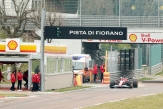
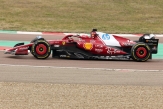
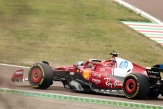

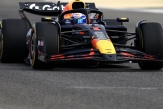
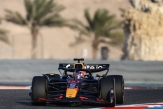
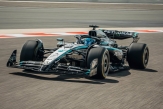
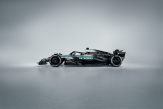
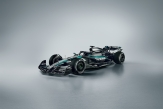
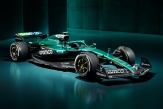
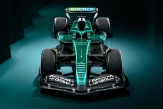
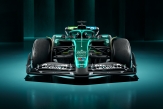
.jpg)
.jpg)
.jpg)
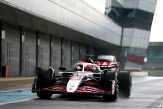
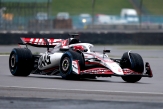
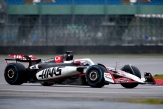
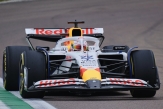
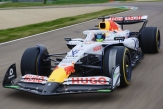



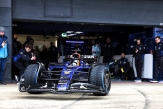
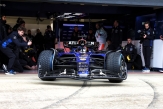
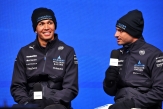

02/12/2025 от Огнян Тенчев (drJeckyll), няма коментари